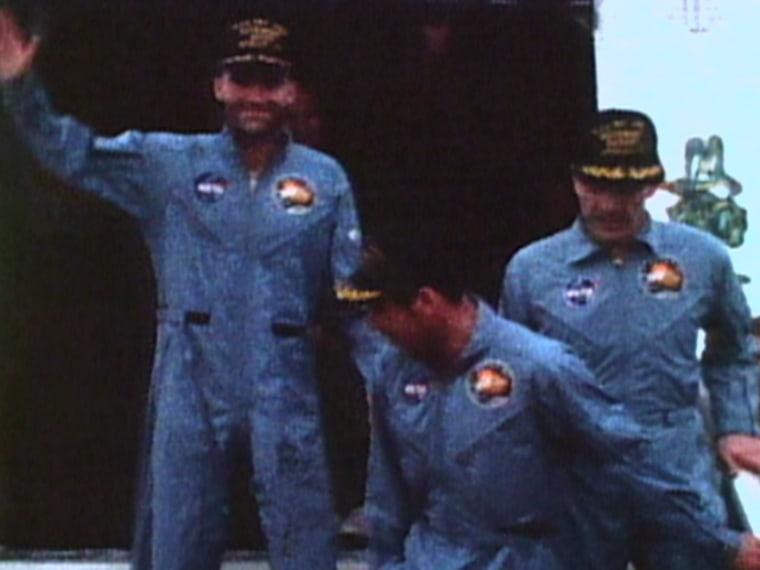It's been 40 years since Apollo 13 safely returned to Earth after a oxygen-tank explosion prevented the spacecraft from landing on the moon and put its three-man crew in danger.
Four decades later, NASA and the surviving two astronauts, Jim Lovell and Fred Haise, are celebrating an aborted mission that turned potential disaster into a successful recovery.
"A 'successful failure' describes exactly what 13 was — because it was a failure in its initial mission — nothing had really been accomplished," Lovell, the commander of Apollo 13, now 82, told Reuters Television in an exclusive interview.
But he hailed the nerve-racking mission, which had gripped the world in April 1970, as "a great success in the ability of people to take an almost certain catastrophe and turn it into a successful recovery."
The 40th anniversary of Apollo 13 was celebrated Sunday at the Kennedy Space Center in Florida,
At the time of the oxygen-tank explosion two days into the mission, Lovell, Haise and fellow astronaut Jack Swigert were not initially aware of the seriousness of their situation.
"Well, when the explosion occurred and we sort of found out and assessed on our own that we weren't going to land on the moon, the first thoughts were one of disappointment," said Lovell. "We didn't realize the significance or the danger."
But soon Lovell realized that so much of the spacecraft was virtually useless and he spoke to mission control at the Johnson Space Center in Texas those now-famous words: "Houston, we've had a problem."
"The two fuel cells, or the three fuel cells, failed," Lovell said. "The two oxygen tanks failed. We lost communication. We lost the use of our computer for a while. And consequently we had never really practiced for that."
For five days, the crew of Apollo 13 and mission specialists on the ground dealt with crisis upon crisis, rationing food and water, dealing with a loss of cabin heat and even using the Lunar Module as a so-called "life boat" during the return trip to Earth.
"We always were able to solve a crisis as it came up some way, jury-rigging, or doing something to keep our spacecraft going, and finally for a safe landing," Lovell said.
The Apollo 13 crisis — later made into a motion picture starring Tom Hanks — captivated the nation.
Large crowds gathered at New York's Grand Central Station to watch the astronauts' successful splashdown in the Pacific and the hero's welcome for Lovell, Swigert and Haise aboard the USS Iwo Jima recovery ship.
In the end, Lovell never landed on the moon during his 11-year career as a NASA astronaut. Lovell and Haise went on to careers in telecommunications and aerospace, respectively. Swigert went into politics and was elected to Congress in 1982, but he died of bone cancer before he could take office.
